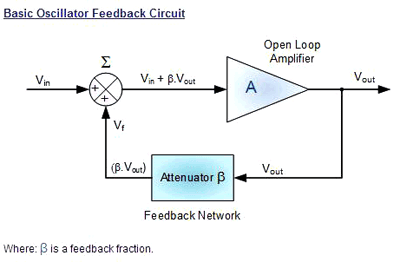When I was in college, I spent a lot of time in the library researching books when I needed information related to electronic devices. It is amazing how things have progressed and that all you need now is just a high speed computer. The web has tons and tons of information, and sometimes it can take more than a few mouse clicks to get what you want.
So since you are interested in material related to “Fundamentals of Oscillators,” I wanted to make it easy for you with what I think is the best of the best to get you started. Feel free to e-mail us at Electronic Products Feedback if you come across other related material.

First to get you started here is a tutorial about LC oscillators, the Hartley oscillator, Colpitts oscillator, RC oscillator, Wien Bridge oscillator, the quartz crystal oscillator.
2. Theory of oscillator operation
With this piece Fox Electronics introduces the theory of operation for an oscillator circuit. The paper describes the two primary oscillator circuits (series and parallel), load capacitance, drivel level, and frequency vs overtone mode. The ends with some design considerations.
3. Fundamentals of Quartz Oscillators
The accuracy of a generated frequency depends upon the reference element selected. The purpose of this note is to provide a background on the crystal reference element and its impact in an oscillator circuit.
4. Oscillator Phase Noise Measurements using the Phase Lock Method
This thesis (from Tampere University of Technology) gives information about one particular phenomenon, phase noise of oscillators, and how that can be measured with the required accuracy. It describes the theory behind phase noise, reviews the different measurement set-ups, and also introduces the problems found in those set-ups, and shows measurements results. It ends by discussing the biggest weaknesses of the chosen measurement set-up and gives some ideas how to improve the performance
5. Introduction to RF VCO design
The Analog & Mixed Signal Center at Texas A&M University (TAMU) gives an overview of the VCO and presents the design of a 2.4-GHz VCO for Bluetooth applications. Testing result of the circuits is also provided.
6. Definitions for various types of oscillators
Finally, Educypedia.com is a handy link where you can find definitions for any type of oscillator. The links direct you to scientific and Educational materials as well. Enjoy!
Advertisement
Learn more about Electronic Products Magazine





